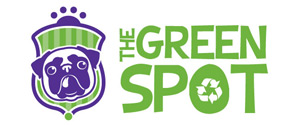- Do you subscribe to Dharma Dog Training’s Newsletter? You should.
- A Unique Campaign from The Humane Society of the United States
- Rabid bats in Omaha- Stay safe, prepared with these tips
- Springtime Activities in Omaha
- Mill Dog Monthly from Bailing Out Benji
- World Spay Day, Legislative Alert in Nebraska
- Attend the Nebraska Rescue Council’s monthly meeting this Saturday
- Five Hard-to-Ignore Reasons to Adopt!
- Paws in Pink to Benefit Breast Cancer Foundation
- VCA, Inc. Acquires MidWest Vet Specialists from Kansas State University
An Introduction to Raw Feeding and the Raw Food Diet
Through our Facebook page at Pets In Omaha, we noticed a growing number of links and comments regarding what is called the Raw Food Diet. Also, a recent Pet Spotlight interview revealed that another of our pet partners foresees a large growth in this area of pet diet. Our founder and team members all have pets and have had them for all of our lives, but none of us have ever experimented with or, in some cases, even heard of such a practice. In an attempt to discover more about the diet and fill readers in, we recently questioned an Omaha advocate for the Raw Food Diet.
Sarah Boggs is currently in her fourth year of feeding both of her dogs a homemade, properly balanced Prey Model Raw diet. Like many raw feeders, she started feeding raw because of an unresolved health condition with one of her dogs.
“My younger dog, Lola, had suffered from chronic colitis for 3 years. She had these awfully painful episodes every week that lasted for hours. We had tried lots of different high quality commercial food brands (grain free and grain included), Vet prescription diets, supplements, and more. The only thing that helped was antibiotic medication. Frustrated, and not wanting to have her on prescription antibiotics all the time if I could help it, I decided to try feeding her a homemade raw diet to see if it could be helpful.”
Boggs spent a couple of months researching and reading everything she could about raw feeding from books, Web sites and raw feeding forums, then decided on the type of diet she wanted to feed her dogs. Through her research, she learned how to feed them properly. After 6-8 months on the raw diet, Lola’s chronic colitis condition had greatly improved and her episodes had gradually diminished in frequency and time. Now she gets only a couple episodes a year, and they last about 20 minutes. This was a significant improvement compared to a couple of episodes every week, lasting 6-7 hours at a time. We are unsure if these results are typical, but given the rise in popularity of the diet, we suspect that this lifestyle choice can benefit many animals.
Lola and Boggs’ other dog have also had other general health improvements from feeding raw. Both are Beagle mixes and neither have ear problems with yeast or bacterial infections anymore- something they experienced before. She says she doesn’t have to clean their ears at all now. Both dogs were overweight and had struggled to lose weight even with reduction in food fed, restriction of treats, and added exercise. They both lost almost 10 lbs over their first year on a raw diet. Their weight has been much easier to maintain now since switching to raw and their veterinarian could not believe how fit and trim they looked after switching. Boggs also says their coats are softer, their teeth and gums are healthier and their annual blood work numbers have improved according to her vet.
“Feeding a homemade raw diet isn’t as convenient as grabbing a bag of dry dog food and just pouring a measured amount into a bowl, however, the health benefits I’ve witnessed, and money on vet bills I’ve saved from feeding raw, has made it worth the extra time and effort.”
For those of you who don’t know of it, here’s a quick summary of what constitutes raw feeding:
Raw feeding is the practice of feeding your pet raw, uncooked foods. Some pet owners feed solely raw foods to their pets, referred to as a raw food diet. There are different types of raw food diets- they can be homemade or commercially produced. With dogs and cats, many raw diets include a variety of raw meats, raw organs and raw bones (ground or whole). Some raw diets also include raw vegetables and/or other food additions fed in certain percentages to reflect nutritional needs. Two of the most common types of raw diets are Prey Model Raw (PMR) and B.A.R.F. (Biologically Appropriate Raw Food).
A PMR diet is a variety of different raw meats, appropriate raw bones and raw organs. Usually the diet is 80 percent raw meat, 10 percent raw bones and 10 percent raw organs. Five percent of the organs are always liver. The amount of food fed depends on the pet’s ideal weight, and activity level, and metabolism.
A Barf diet is a variety of raw meats, bones, and organs with the addition of raw vegetables and possibly other foods. These other foods are also fed in a certain percentages and a certain amount according to a pet’s ideal weight, activity level and metabolism.
In Boggs’ case, she started the raw food diet in order to address a medical condition that couldn’t be resolved by using traditional means. You may be asking, “why should I consider the raw food diet?” Here’s what she suggests:
“There are different reasons a pet owner may choose to feed their pets raw. For some, it’s about the quality of nutrition and added moisture content raw, fresh foods can offer. For others, it’s about feeding an ancestral diet or a diet that a pet’s anatomy and physiology is designed for. With some pet owners who want to feed a homemade, fresh-food-type of diet to their pet, they choose to feed a homemade raw diet over a home cooked diet because it can be easier and less time consuming to prepare and balance properly. Cooking foods reduces some nutrients and usually requires more supplementation. Some pet owners choose to feed homemade raw diets over commercial raw diets because they can be cheaper.”
So, a raw food diet returns a pet’s diet to a state which was prevalent before domestication and also could promote a cheaper way of feeding. What’s more is that dogs are not the only animals that can benefit from eating a raw food diet.
“Raw diets are not just for dogs,” Boggs says. “Many other pets like cats, rabbits and ferrets can be fed a raw diet as long as the type of raw diet fed meets the animal’s nutritional needs.”
“I think any living being can benefit from eating at least some fresh raw foods in their diet.”
If that’s not enough information for you to consider the raw food diet, whether it’s the prey model raw diet or the biologically appropriate raw food diet, here’s more to know:
There can be many benefits to feeding a raw diet to your pets. For example: dense nutrition, ease of digestion and absorption, added moisture content, smaller animal waste amounts and, depending on the type raw diet fed, cleaner teeth and gums and more control over the diet and foods fed.
With raw, fresh foods, many of the nutrients are still in the food as heat will destroy or lessen some of them. It is especially important for maintaining amino acids like tryptophan and lysine and important antioxidants like glutathione, B vitamins, and vitamin C. It’s the reason why on commercial dog food bags you’ll see a lot of vitamins and minerals listed separately in the ingredients label. They have to add supplements back into the food to make them nutritionally complete after the loss of some nutrients due to the high heat cooking process.
Natural enzymes found in fresh raw foods also can be heat sensitive and these enzymes are important as they aid in digestion and absorption of many nutrients. It has been found that food-sourced nutrients are better used by the body. Some dogs who have food sensitiveness, food allergies or gastrointestinal issues (IBS, colitis) may do well on a raw diet because of it’s ease of digestion with the natural enzymes. “I have known a few dogs allergic to the cooked version of a protein like chicken, but were able to eat the raw version without issue,” says Boggs.
Because the foods are raw, they won’t contain known cancer causing chemicals recognized by the National Cancer Institute like Heterocyclic amines, which are created by cooking meats at high temperatures, as is the case with manufactured dry dog foods. In a small scientific study done in 2003, 25 different commercial dry dog foods were sampled and many were found to contain Heterocyclic amines. Click this link to read the study.
Another benefit to raw feeding for many pet owners is less pet waste. “I experienced this with both my dogs when we switched them to raw diets. Their waste amount decreased by about 50 percent in size and seems to degrade faster, turning into white dust and then disappearing usually within a few days- especially in the summer. Since feeding my dogs raw, I no longer have a backyard full of dog waste piles that I have to pick up. The reason for the smaller waste is the diet is better digested with the enzymes and contains less or no plant based foods (grains, veggies) that dogs can have a harder time digesting, leaving their stool more bulked.”
If a pet owner feeds a raw diet that includes properly fed raw whole bones, the pets get the added mental stimulation and dental/gum health from chewing and or consuming them. Some pet owners who feed raw meaty bones as part of feeding a raw diet find that their pets either no longer need the expensive vet dentals or need them less often. This saves money and also saves pet from the stress of having a vet dental with anesthesia.
For pets with health conditions, homemade raw diets can be easier to control the ingredients fed, and to some extent, the quality of those ingredients, too. If you need to feed a diet without chicken due to an allergy, you can be more certain that the diet doesn’t include it than you can be with a commercially manufactured diet. Pet food labels are often cryptic, ambiguous and hard to read. Click here for commentary about this problem.
“With commercial pet foods, most companies don’t offer the name of their food suppliers for proprietary reasons, so there is no way of knowing what quality of chicken or beef is being used in the food,” Boggs indicates. “With a homemade raw diet, it’s possible to search out food sources that you want to feed so you know that the quality of chicken or beef is human grade or antibiotic free. You can also see if the ingredients are free range or organic or come from a certain farm. There can be more certainty and control over the quality of raw foods you’re feeding.”
Raw diets usually include more animal protein and much fewer carbohydrates than commercial dry dog foods, which makes raw diets more acidic in PH. This can be helpful sometimes in reducing the occurrence of urinary tract infections and certain types of bladder stones.
The higher protein, lower carbohydrate type of raw diet can be beneficial with obesity in dogs as it’s been shown by a study to help enhance weight loss, while keeping muscle mass. This link gives credence to that notion.
We found Boggs through her Facebook page and wondered why she wanted to create such a place and whether she had a mission in mind.
“When I was researching and getting ready to feed my dogs raw, I was nervous, a little unsure and overwhelmed with information. I had some experienced, successful raw feeders help me by answering any questions or concerns I had and offered advice and support when I needed it. They really helped make the experience of switching my dogs onto a raw diet easier. I started the Omaha NE Raw Feeders Facebook page as a place where current local raw feeders or those interested in raw feeding could find information and local resources, get questions or concerns answered about feeding raw and share information and resources with others in relation to raw feeding. Local resources can include where to find commercial raw foods, raw fresh foods (some raw organs and more exotic meats can be more difficult to source), information on good deals, sales and more.” The page also gives references to local raw food diet proponents and veterinarians.
So, we wondered, is this a trend or is it something that isn’t simply known to many pet owners? Boggs went back to the idea that animals have eaten this way since their existence.
“Dogs have been consuming raw foods since they came into existence and it was their natural diet before their relationship with man. To date, it has not been found that their digestive systems have changed or evolved differently from their wolf ancestors with the exception of a recent study where a higher amylase gene expression was found in dogs (according to researchers of this study, a change in amylase gene expression does not mean a change in amylase enzyme production, which would allow for easier digestion of plant based foods). As for pet owners today, there are some raw feeders who have been feeding raw diets for decades, however, I do think the practice of raw feeding has become more known in the last few years.”
The upward trend for this diet is also a result of the development of mass-produced dry foods. “With more recent large pet food industry recalls, and pets socially being considered more as family members, I think people are taking more of an interest in what their pets are eating. With obesity rates rising in people (pets as well), I think there has been a little more focus on diet and quality of nutrition.”
Commercial dry dog foods and treats are heavily processed. The simple advice from some human nutritionists and doctors of eating less processed foods and more fresh foods as one way to increase better health, Boggs thinks some pet owners have started asking themselves if the same practice would be true for their pets, too.
Healthy dogs and cats can handle the bacteria found in raw meat like Salmonella very well- better than humans- as their digestive tract is shorter and produces faster digestion. Also, their stomach PH is more acidic and is designed to kill more bacteria than ours. Usually the guts of animals aren’t fed, which is where you’ll find most parasites. If feeding whole small animals or meat that is known to possibly have a risk of parasites, freezing any raw meat/organs at appropriate temperatures for a few weeks will kill most parasites, Boggs says.
In conclusion to this long but very informational post, if someone is interested in feeding a raw diet, especially a homemade raw diet, they need to be aware of the risks and research these types of diets so they will feed animals properly. Knowledge will lessen the risks to pets. Proper handling of raw foods and cleaning afterwards (the same as you would when handling raw meats that you will cook for your own meal) is important. If feeding raw bones, learn what types of raw bones are appropriate for the size of your dog and the type of “chewer” they are.
Boggs is a wonderfully knowledgeable resource for anyone who is considering a raw food diet and she can be reached through her Facebook page.
Are you a raw food diet feeder? We’d love to hear your reasons for practicing it on our Facebook page, on Twitter or by using our contact form. We are happy to bring you stories like this so that you, as a pet owner, have many options as to the care of your animals. Please find below a list of links to articles that Sarah Boggs has relayed on to us if you are considering the raw food diet. They cover many issues discussed above, include commentary from proponents of the diet and opponents. We feel that, after a little research, you will be better informed and will be able to make a decision as to whether the raw food diet is a fit for your animal.
Vet Dr. Peter Dobias on giving your dog appropriate raw bones
http://peterdobias.com/
Vet Dr. Jodie Gruenstern on feeding raw bones
http://www.ivcjournal.com/
Vet Dr. Will Falconer raw bones and dental health
http://vitalanimal.com/
Vet Dr. Khuly on raw bones
http://www.petmd.com/blogs/
Vet Dr. Greg Martinez on feeding raw bones
http://www.thrivingcanine.com/
Vet Dr. John Simon
http://www.doc4pets.com/
Vet Dr. Patrick Mahaney
http://www.petmd.com/dog/
Vet Dr. Micheal Fox
http://www.
Vet Dr. Doug Knueven
http://www.
Vet Dr. Peter Dobias on the AVMA warnings and feeding raw.
http://peterdobias.com/
Vet Dr. Jean Hofve on the AVMA’s warnings and feeding a raw diet
http://www.littlebigcat.com/
Vet Dr. Karen Becker on feeding raw meat to our pets and bacteria/parasite concerns
http://healthypets.mercola.
Related Posts
Latest News
-
Join Us at Pick A Pooch 2025: A Fun-Filled Weekend for the Whole Family
A Fun-Filled Weekend for Pet Lovers and Families Alike Mark...
- Posted 1 year ago
- 0
-
Beardmore Presenting Sponsor At This Years Pick-A-Pooch event
🐾 We are thrilled to announce that Beardmore Subaru is...
- Posted 1 month ago
- 0
-
How Having A Pet Can Change Your Life
Having a pet can open your heart in ways that...
- Posted 3 months ago
- 0
-
How To Improve The Life Of Your Senior Pet
Do you have an elderly fur baby and want to...
- Posted 3 months ago
- 0
-
Springtime Activities To Enjoy With Your Furry Friends
Are you preparing for warmer weather and want some ideas...
- Posted 4 months ago
- 0
-
Pros And Cons Of Microchipping Your Pets
Have you considered whether your pets should be microchipped and...
- Posted 5 months ago
- 0
-
The Best New Fun Toys For Dogs And Cats
The Best New Fun Toys For Dogs And Cats Did...
- Posted 5 months ago
- 0
-
Heartfelt Ways To Show Your Pet You Love Them
Did you know there are more ways to show your...
- Posted 6 months ago
- 0























One Comment
You must be logged in to post a comment Login